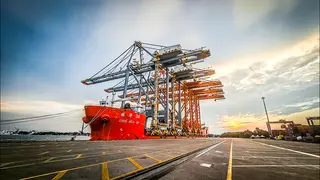A reduction in iron ore traffic - driven by a mix of ban on iron ore exports and slower demand from China - continued to pull down the total load handled at major ports in November.
During the month, the two key commodity groups that registered a decline in traffic handled at major ports were iron ore and coking coal. All key commodity groups – petroleum products, fertiliser, thermal coal and containers – registered growth.
Major ports handled 45.67 million tonnes cargo, a 0.51 per cent drop against the same period last year.
The reduction in iron ore export cargo – of 2.6 mt - was more than the increased handling of finished fertiliser, container traffic and thermal coal during the month. These were the three commodity segments that got the maximum incremental traffic - of 2.18 million tonnes - to the ports during the period.
On a cumulative basis, the major ports handled 370.68 mt between April-November, registering a 1.33 per cent growth. This was on the back of lower handling of iron ore, fertiliser and coking coal.
NON-MAJOR PORTS
The slower growth at major ports is also due to higher cargo handled by non-major ports – administered by the State Governments. The non-major ports account for about 35 per cent of total traffic.
For instance, Mundra Port SEZ – which operates the Gujarat Government’s non-major port at Mundra - handled about 5.7 mt cargo in November, said industry sources.
MPSEZ handled close to one mt fertiliser in November, according to a company statement.
The consolidated data for total traffic handled by non-major ports is not available at present.








Comments
Comments have to be in English, and in full sentences. They cannot be abusive or personal. Please abide by our community guidelines for posting your comments.
We have migrated to a new commenting platform. If you are already a registered user of TheHindu Businessline and logged in, you may continue to engage with our articles. If you do not have an account please register and login to post comments. Users can access their older comments by logging into their accounts on Vuukle.